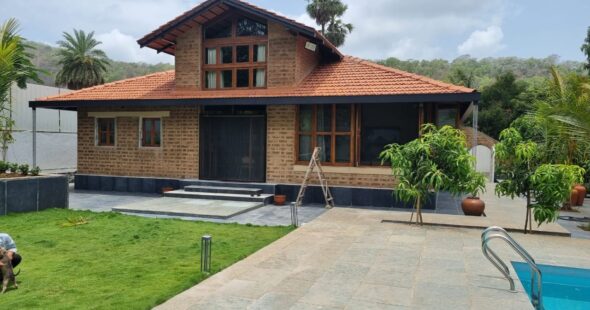
Lime plaster has been used for centuries, admired for its strength, breathability, and timeless beauty. What makes it truly fascinating is the transformation it undergoes — from simple limestone dust to a polished, gleaming finish that adorns walls and ceilings. This journey, often referred to as “from dust to shine,” reveals not only the craftsmanship behind lime plaster but also the science that makes it one of the most sustainable building materials in history.
Step 1: Extracting and Preparing Limestone
The process begins with limestone, a naturally abundant material composed primarily of calcium carbonate. Once quarried, the stone is crushed into smaller pieces and prepared for burning. This is the starting point of a journey that will ultimately transform rock into a workable plaster.
Historically, limestone used for palaces and temples in India was carefully selected for quality. This ensured the plaster’s durability and smooth finish — a practice that remains vital for modern Lime Plaster Service in India.
Step 2: Calcination – Turning Stone into Quicklime
The limestone is then heated in lime kilns at temperatures exceeding 900°C. This process, known as calcination, drives off carbon dioxide, leaving behind quicklime (calcium oxide). Quicklime is highly reactive and must be handled with care, but it is this transformation that forms the foundation of lime plaster.
Step 3: Slaking – Creating Slaked Lime
Quicklime is then mixed with water in a controlled process called slaking. The reaction produces calcium hydroxide, also known as slaked lime. This stage is crucial because improperly slaked lime can cause future cracking and structural issues.
Artisans often store slaked lime for weeks or even months to enhance its workability and strength. This traditional method ensures that the plaster develops its signature smoothness and durability.
Step 4: Mixing with Natural Additives
To prepare lime plaster for application, slaked lime is blended with aggregates like sand or marble dust. Sometimes, organic materials such as jaggery, gum, or plant extracts are added to improve binding and flexibility. These natural additives make lime plaster stronger and more resilient compared to purely synthetic alternatives.
Step 5: Application on Walls
Once the mix is ready, artisans begin applying it in multiple layers:
Base Coat: A coarse layer for strength and adhesion.
Intermediate Coat: A finer mix that smooths out the base.
Finish Coat: The final layer, polished meticulously to achieve a smooth, reflective surface.
In high-end finishes like Araish Lime Plaster, the finishing process involves polishing with smooth stones and sometimes natural oils to create a glass-like sheen.
Step 6: Carbonation – The Final Transformation
Once applied, lime plaster undergoes carbonation, where it absorbs carbon dioxide from the air and slowly turns back into calcium carbonate — essentially becoming stone again. This process not only hardens the plaster but also makes it more durable over time.
Unlike cement, which becomes brittle and prone to cracking, lime continues to strengthen and adapt, making it one of the most sustainable building materials available.
Why the Making Process Matters
The meticulous process of making lime plaster is what sets it apart from modern alternatives. Every stage — from quarrying limestone to polishing the final coat — requires skill, patience, and knowledge passed down through generations.
This process explains why lime plaster:
Lasts for centuries without losing beauty.
Helps walls breathe and prevents dampness.
Offers natural cooling properties in hot climates.
Provides finishes ranging from rustic textures to high-gloss elegance.
The Role of Skilled Craftsmanship
While the science behind lime plaster is fascinating, the artistry lies in the hands of skilled artisans. Their knowledge of ratios, application techniques, and polishing methods determines the final outcome. Without expertise, lime plaster cannot achieve its full potential.
This is why involving professionals, often guided by an Architectural design consultant, is essential for modern applications. Their role ensures that this ancient technique is adapted seamlessly into contemporary projects.
Conclusion
The journey of lime plaster is a story of transformation — from raw limestone dust to a shining finish that stands the test of time. Each stage, from calcination to carbonation, showcases the perfect balance of science and craftsmanship.
By choosing lime plaster, homeowners and architects embrace not just a sustainable building material but also a tradition of artistry and durability that has shaped some of the world’s most iconic structures. Truly, lime plaster’s journey from dust to shine is proof that nature and human ingenuity can create beauty that lasts for generations.


